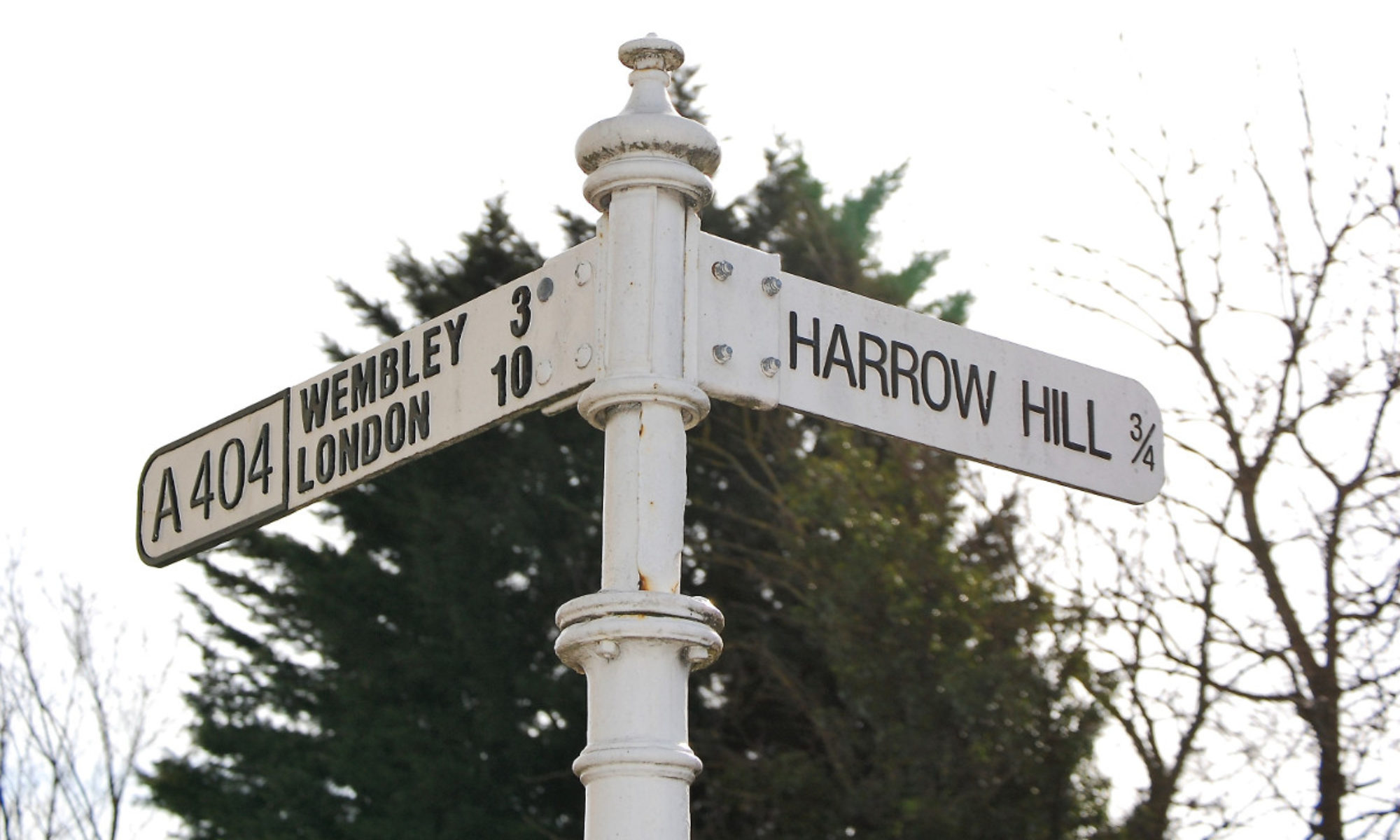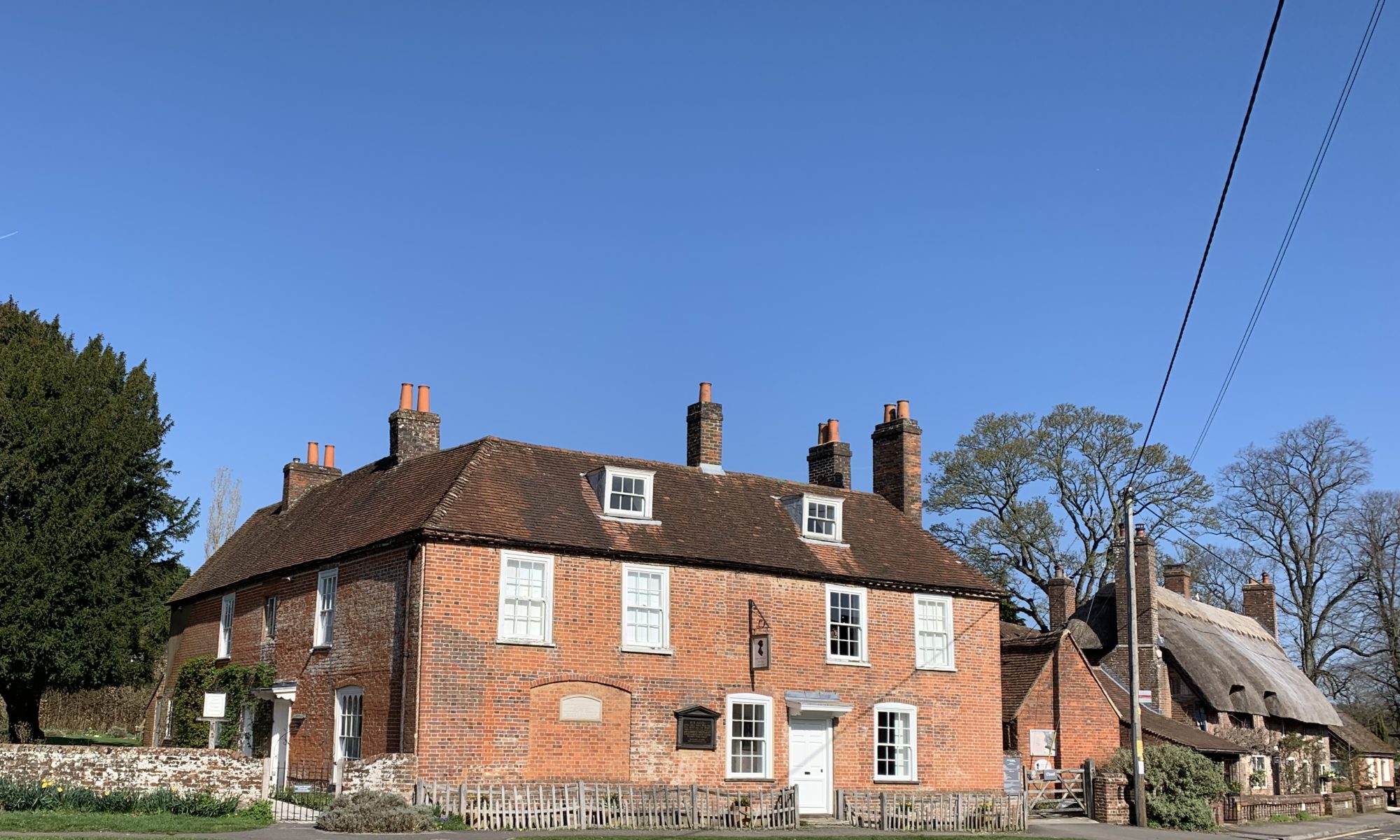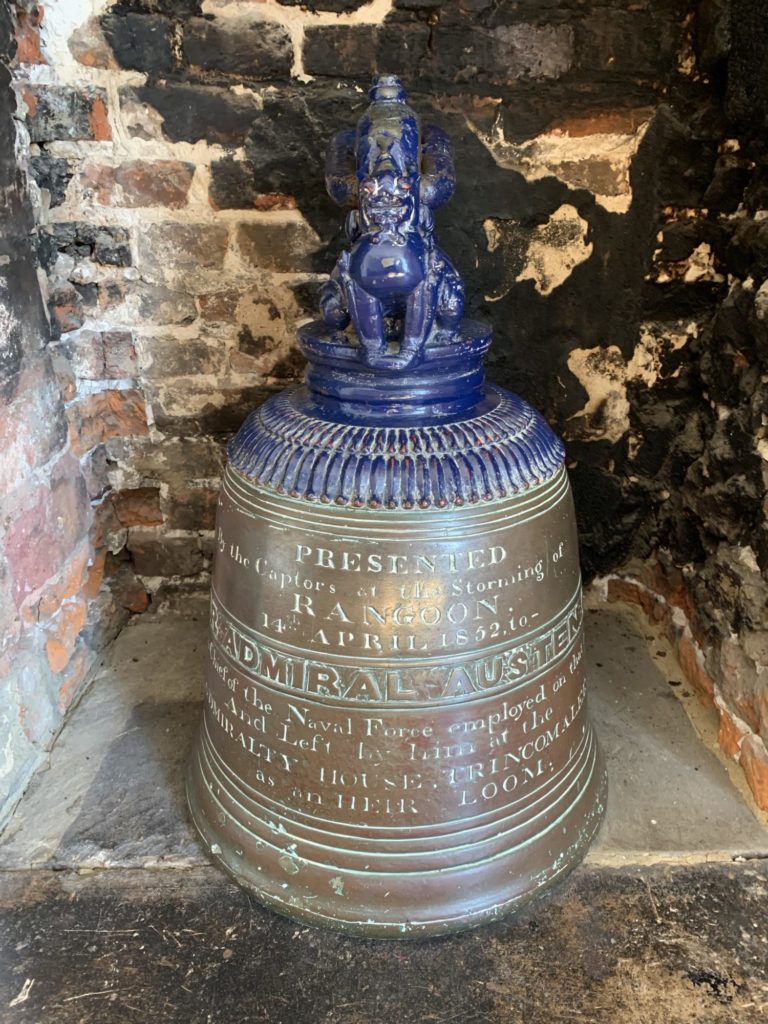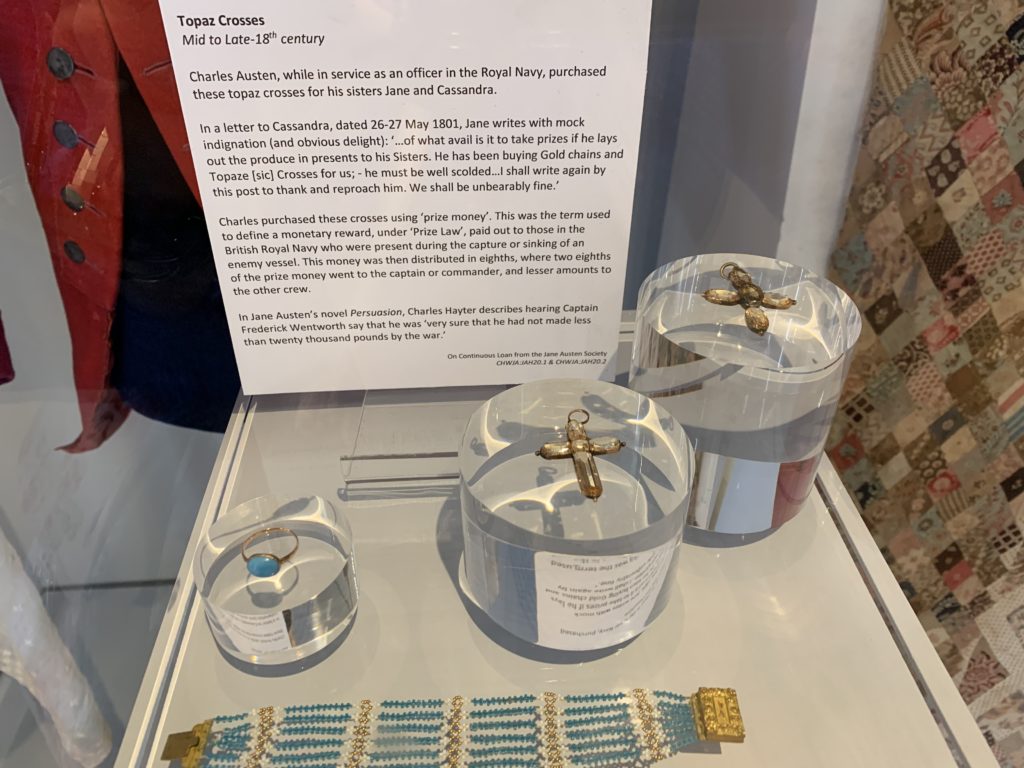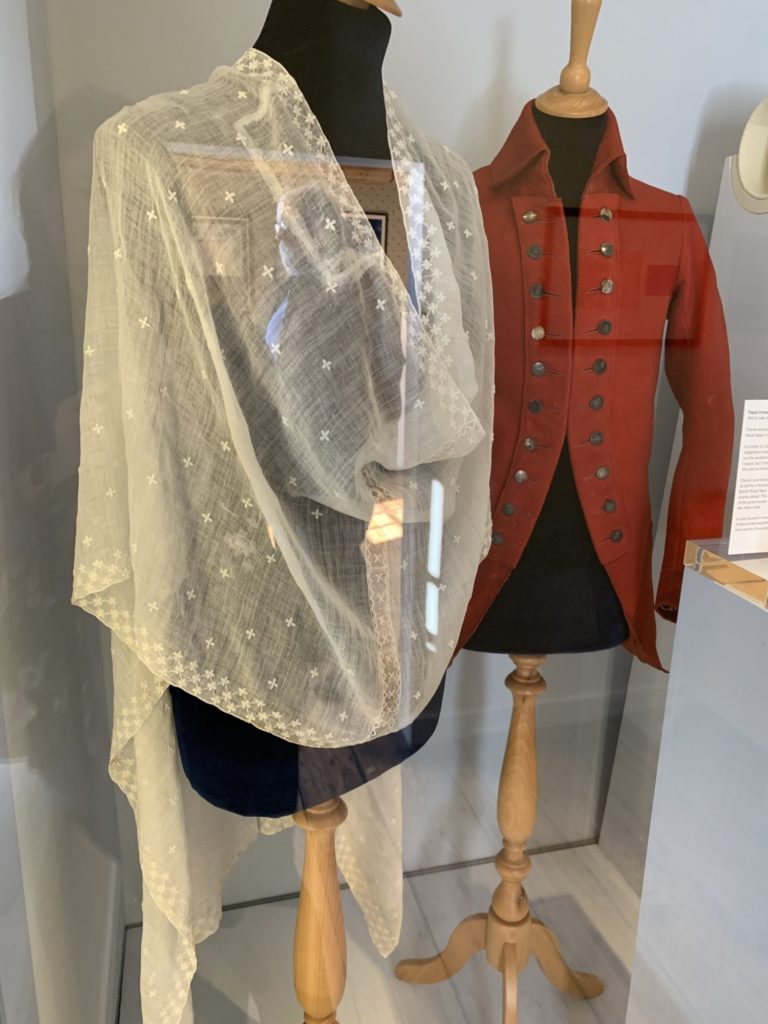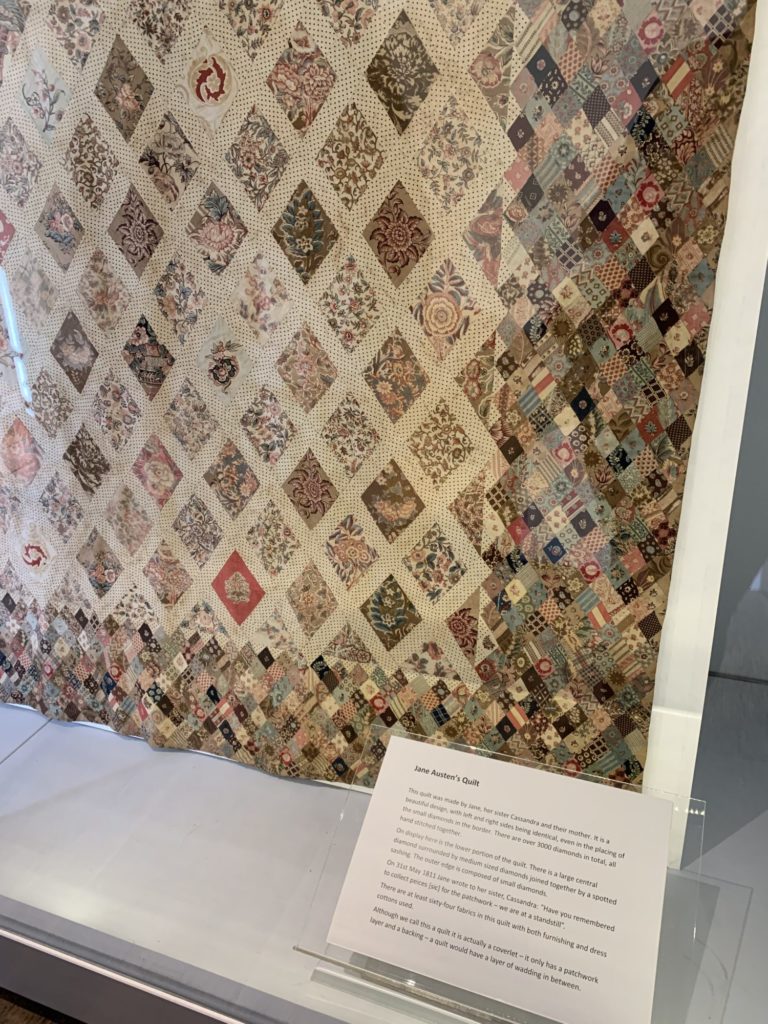I started walking with Jane Austen when I read Pride and Prejudice for the first time at nine. We were staying at my grandmother’s house, and there was a bookcase of classic books in the room I was staying in. During that visit, I read a few of them. The two that I still remember loving were Black Beauty and Pride and Prejudice.
At the time, parts of Pride and Prejudice confused me. Being only nine, I didn’t understand the subtle humor, sarcasm and wit of Jane Austen. Despite that, the novel captivated me and I devoured it. I remember thinking about it for months afterward. It was a puzzle that I wanted to solve.
Since then, I’ve read all six of Jane’s completed novels, most more than once. And, I’ve seen every film adaptation of them that I’m aware of. I’ve read and watched Austen fan fiction, some decent and some dreadful. Suffice it say that I am a fan, a Janeite.
When Kurt and I met, one of
Visiting places significant to Jane’s life and writing as well as filming locations for the many adaptations of her work are high on our (quite long) list. We’ve already visited Bath and the Jane Austen Centre.
Jane Austen Day Trip
Just over 50 miles from our home is Jane Austen’s House Museum. It is the home where Jane spent the last eight years of her life. Jane’s brother, Edward, owned it as part of his inherited estate at nearby Chawton House. He gave the house to Jane, her sister (Cassandra) and their mother to live in. As devoted Janeites, we had to visit.
We made the day trip on a beautiful spring Sunday. We were enchanted from the moment we entered the village. The village is still small and has several thatched-roof cottages and other homes that clearly date to the time when Jane was a resident.
We parked and walked along the lane between Jane’s modest final home and her brother’s grand home. Sheep grazed in the fields and birds sang. It wasn’t hard to imagine
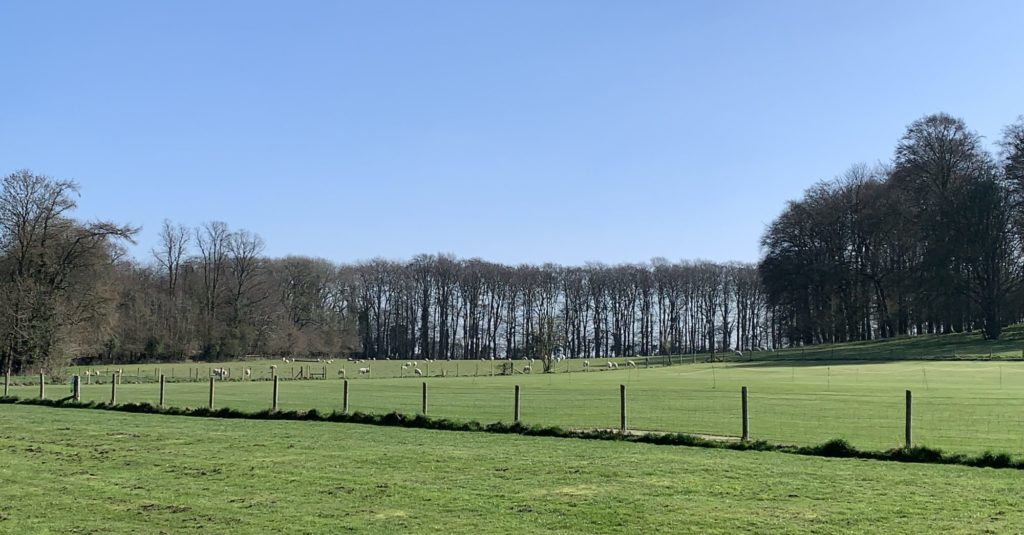
Sheep in the fields 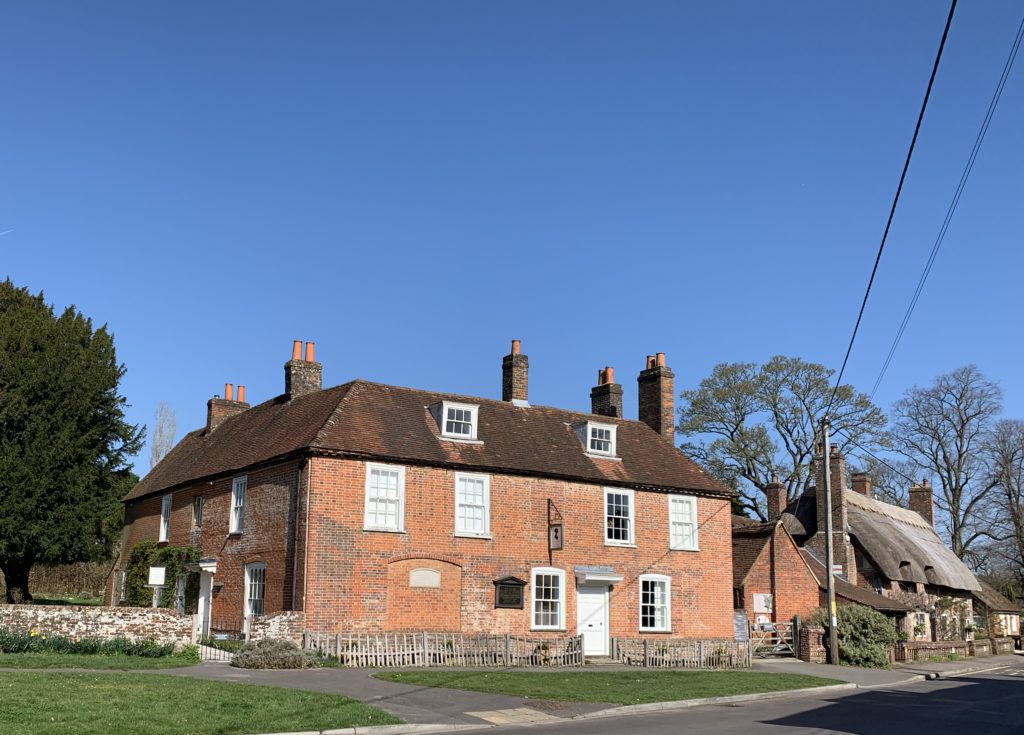
Jane Austen’s House Museum
Jane Austen House Museum
The first thing you see when you enter the museum is the donkey cart that Mrs. Austen and her daughters used to visit friends and go shopping.
Next is the original bakehouse where the Austen ladies’ maid baked pies and washed the household’s laundry. It’s quite a reminder to be grateful for modern conveniences (I wouldn’t mind a maid though).
The beautifully maintained garden is a delight to walk through, although it probably looks nothing like it did in Jane’s time. With no record of what it looked like then, the museum simply designed a delightful spot for visitors to sit and enjoy nature. They ensured that the flowers, trees
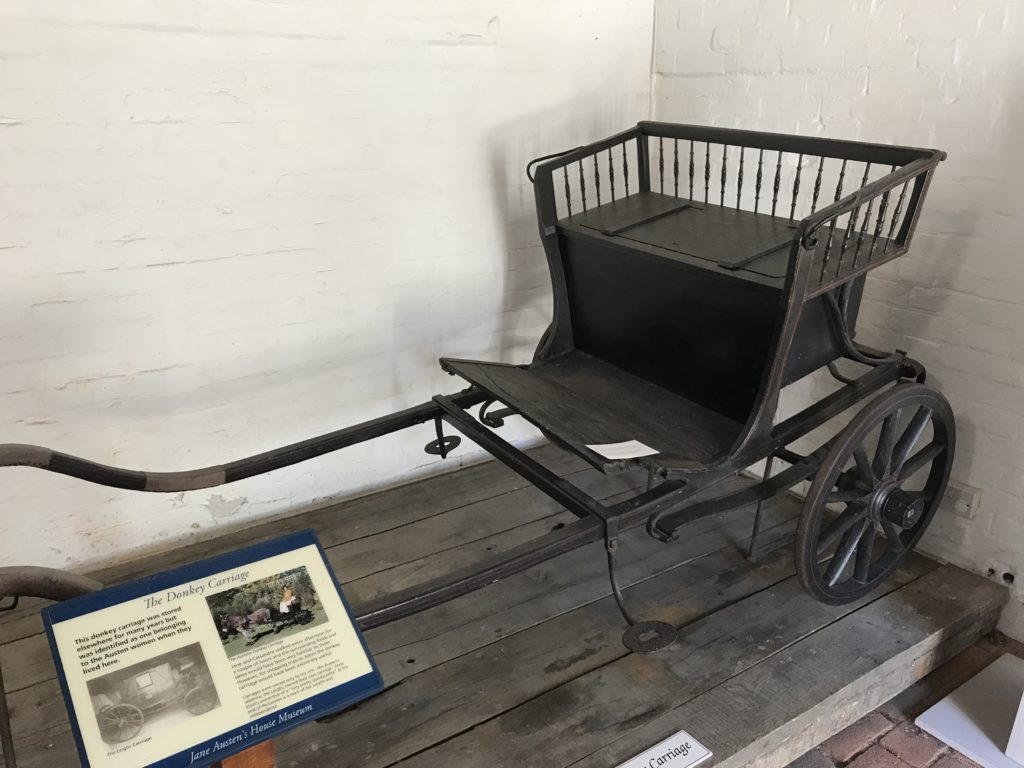
Donkey Carriage 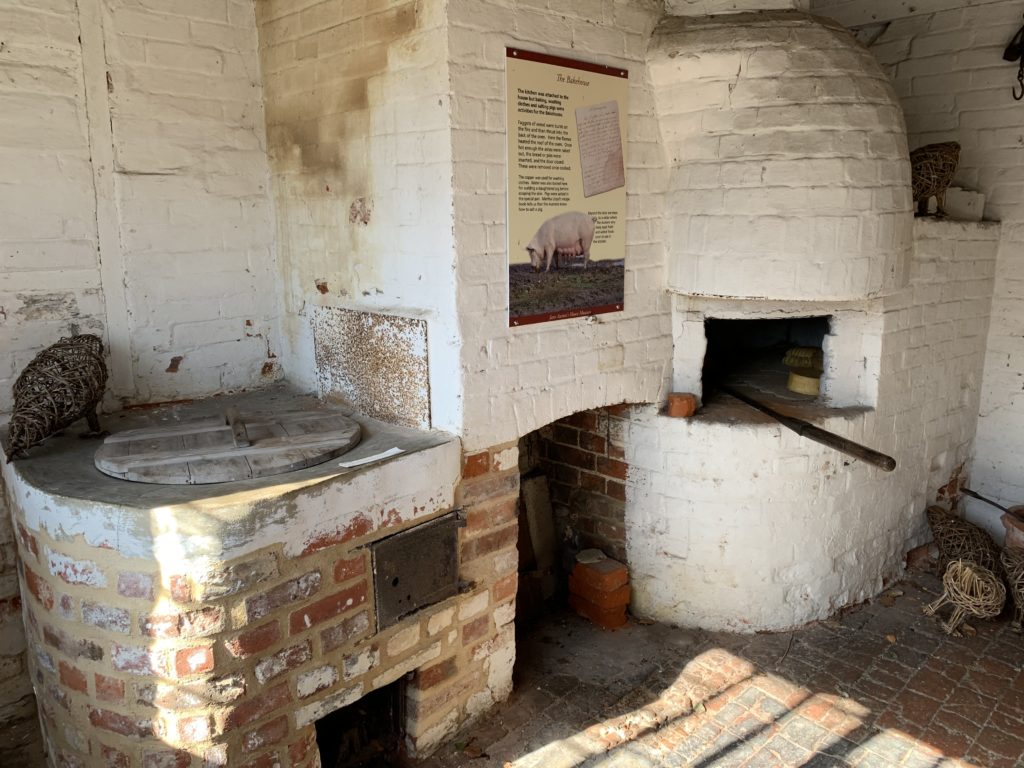
Bakehouse 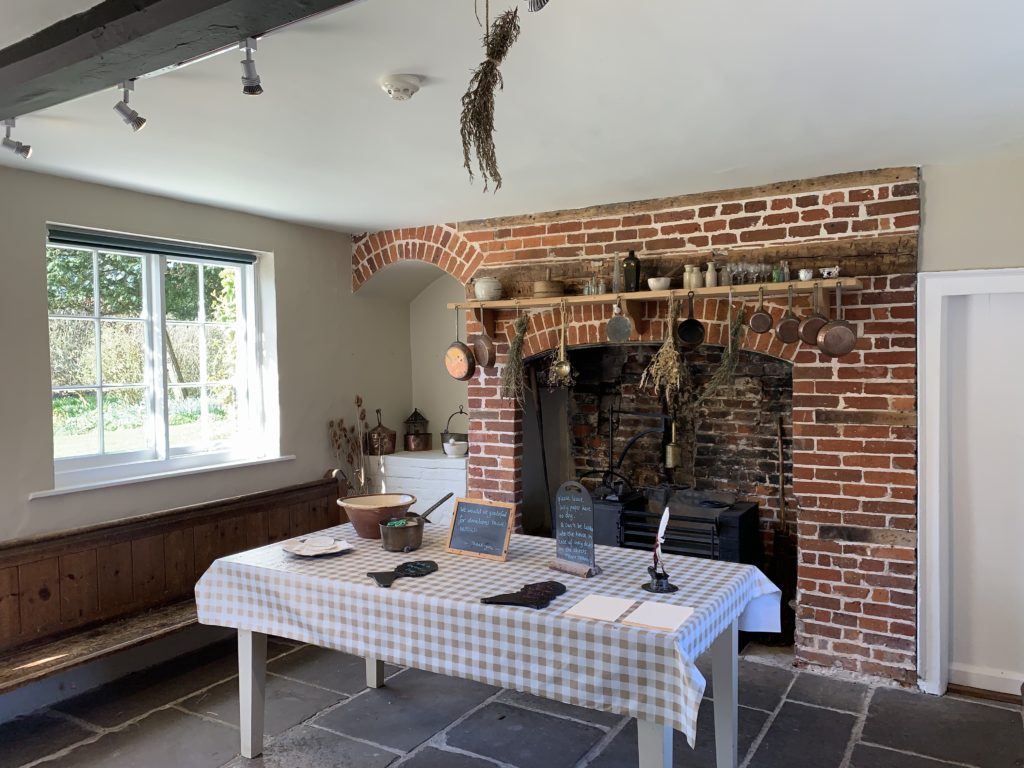
Kitchen Fireplace
Stepping into the kitchen; however, is a step back in time. It features an enormous brick fireplace where the Austen ladies’ cook prepared their meals. In here, the museum keeps a collection of ladies’ bonnets and gentlemen’s hats for visitors to try. Of course, we had to take a selfie sporting those.
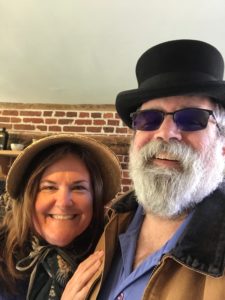
In the years since Jane’s family lived there, the house has had different uses with accompanying changes to its layout. Originally, the kitchen was detached from the main house. It’s attached now but still has a separate entrance.
The museum has returned the house as much as possible to the configuration from Jane’s time, but the main entrance is no longer where it was. Instead, visitors enter through the drawing room.
The friendly docent greeted us and invited us to sign the guestbook. She couldn’t wait to tell us everything she knew about the room. As enthusiastic as she was, we may have overwhelmed her with our enthusiasm for all things Austen. And, I’m pretty sure the husband of the other couple in the room thought we were ridiculous (to put it as one of Jane’s characters might). It was clear that their visit to the museum wasn’t his idea.
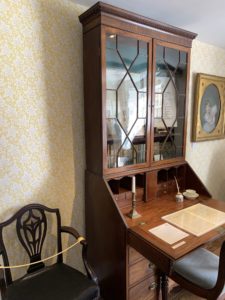
In the drawing room, the museum put up wallpaper reproduced from the pattern that was on the walls when Jane lived there. This room also features Mr. Austen’s mahogany bookcase from their home at Steventon Rectory, where Jane grew up. That bookcase was a fixture in Jane’s life.
Next is the vestibule, which was the main entrance during Jane’s time. Now, it houses a small collection of Jane’s original letters. They are hard to read due both to writing style and size. Paper was expensive and not readily available at the time, so people used it to its fullest leaving almost no margin and writing very small.
Jane’s Writing Table
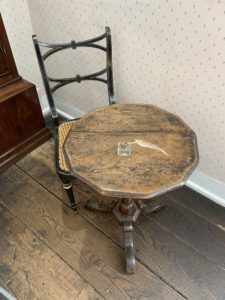
One of the highlights of our visit was the dining room, which is glorious. Jane’s writing table is here to admire but understandably separated from visitors by a plexiglass partition. It’s like they know we’d want to sit down and pose for a picture like we’re writing at it. I wonder how many people were able to do that before they put up the partition.
The dining room also houses other artifacts from Jane’s time, including pieces of the Wedgewood dinner service her brother, Edward, purchased. Jane would have used these dishes when dining with her brother’s family.
One corner of the dining room is a tea cupboard that Jane kept the key to. Inside it is a teapot featuring the Austen family crest and believed to have been Cassandra’s.
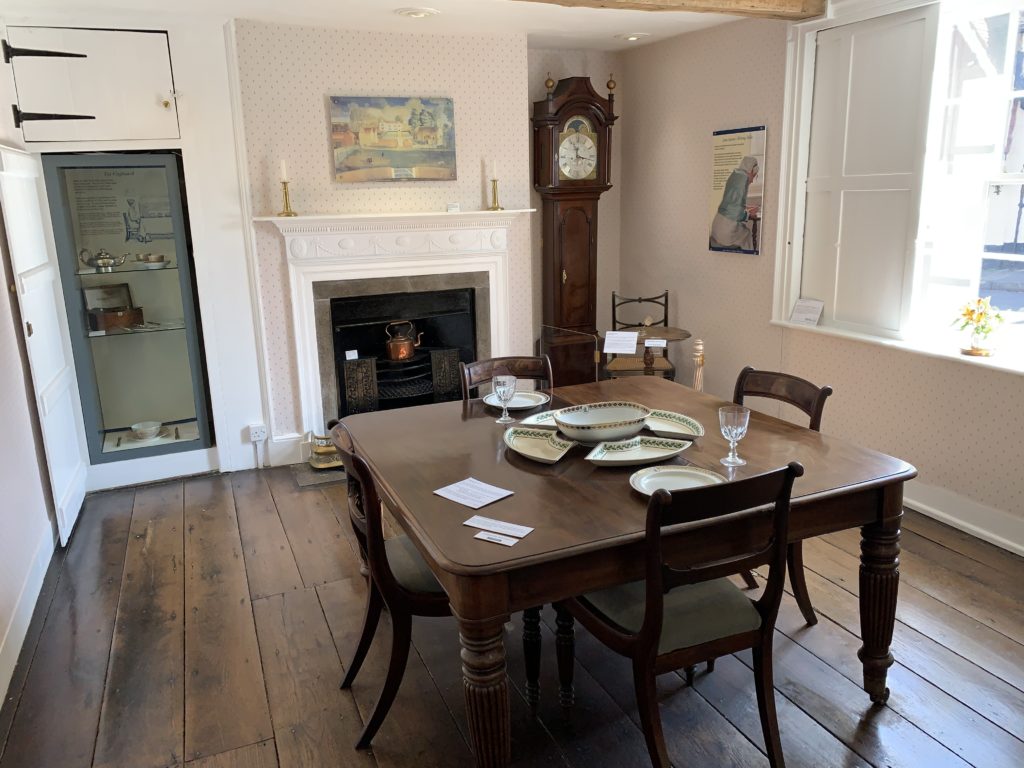
Dining Room 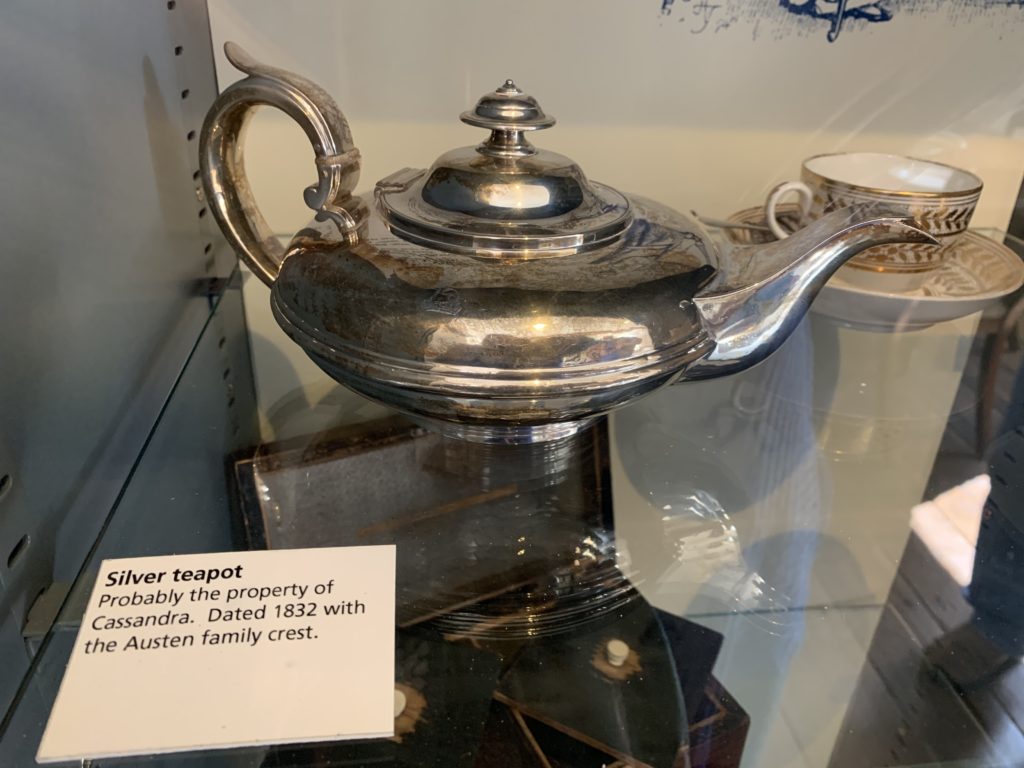
The final room downstairs is a reading room filled with versions of Jane’s published novels. It was fun identifying the titles of her works in Polish, German, Spanish and other languages we didn’t recognize.
Up the very creaky stairs, we found the bedroom Jane that shared with Cassandra. At this point, the experience of walking in Jane’s footsteps overwhelmed me, and I had to take a moment to do a little happy dance. The other visitors clearly weren’t as excited as I was, but I didn’t care.
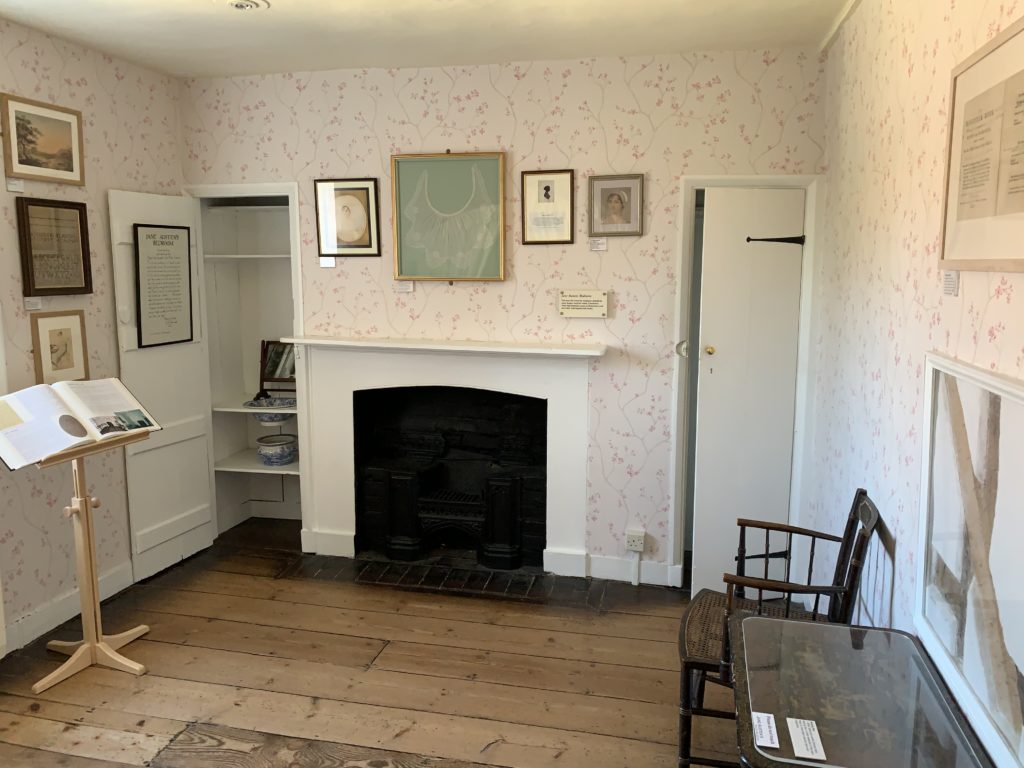
Jane’s Bedroom 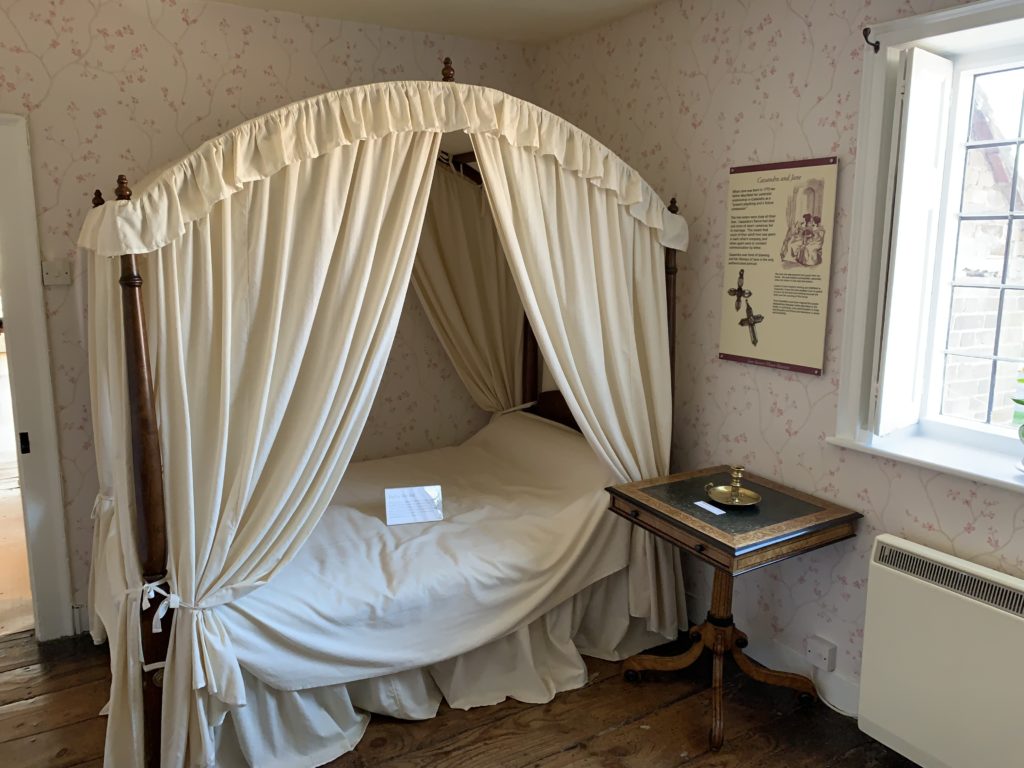
Reproduction bed 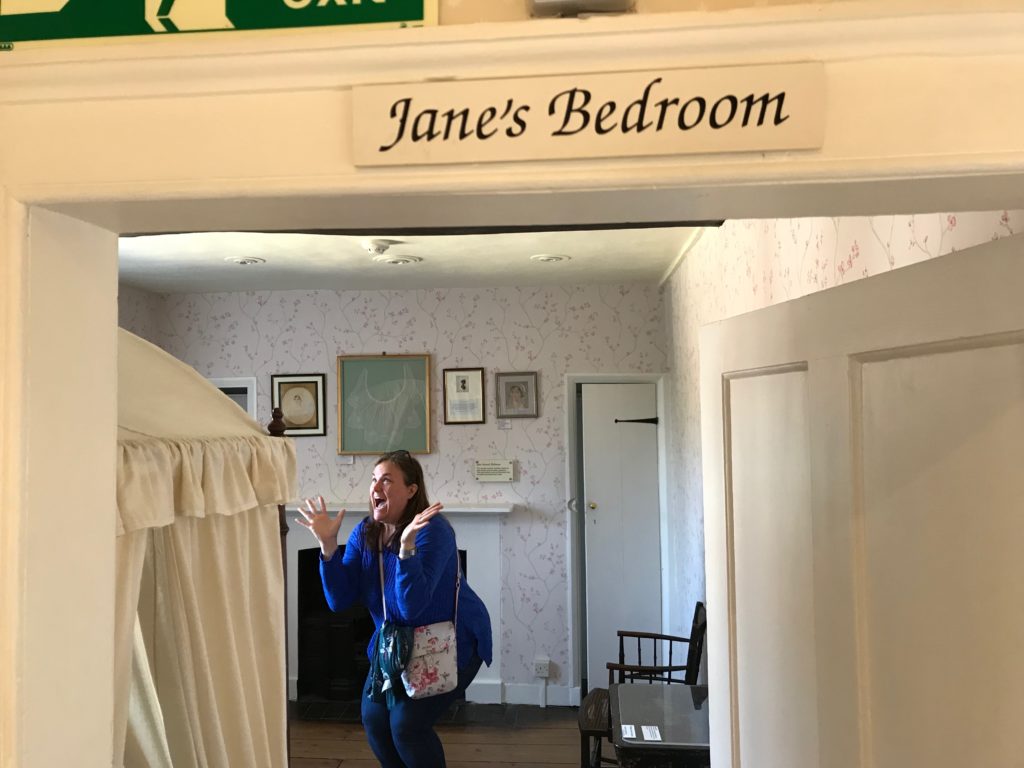
So happy to be here!
The rest of the upstairs houses a collection of Austen family memorabilia. This includes quite a few items that belonged to her two brothers, Francis and Charles, who had successful careers in the Royal Navy. Francis rose to the rank of Admiral of the Fleet, while Charles was a Rear Admiral.
Among the treasures particular to Jane’s life are some of her jewelry, a light shawl she wore, and a beautiful quilt handsewn by Jane, Cassandra and Mrs. Austen.
The museum is fairly small, but we spent almost two hours taking it all in. After lunch at the pub across the street, we walked to Chawton House.
Chawton House
The four-hundred-year-old house is worth a visit, but it’s a very different experience than the museum. The docents are just as friendly and informative, but the house itself has a varied life. It also serves as a library of early English women writers and literature.
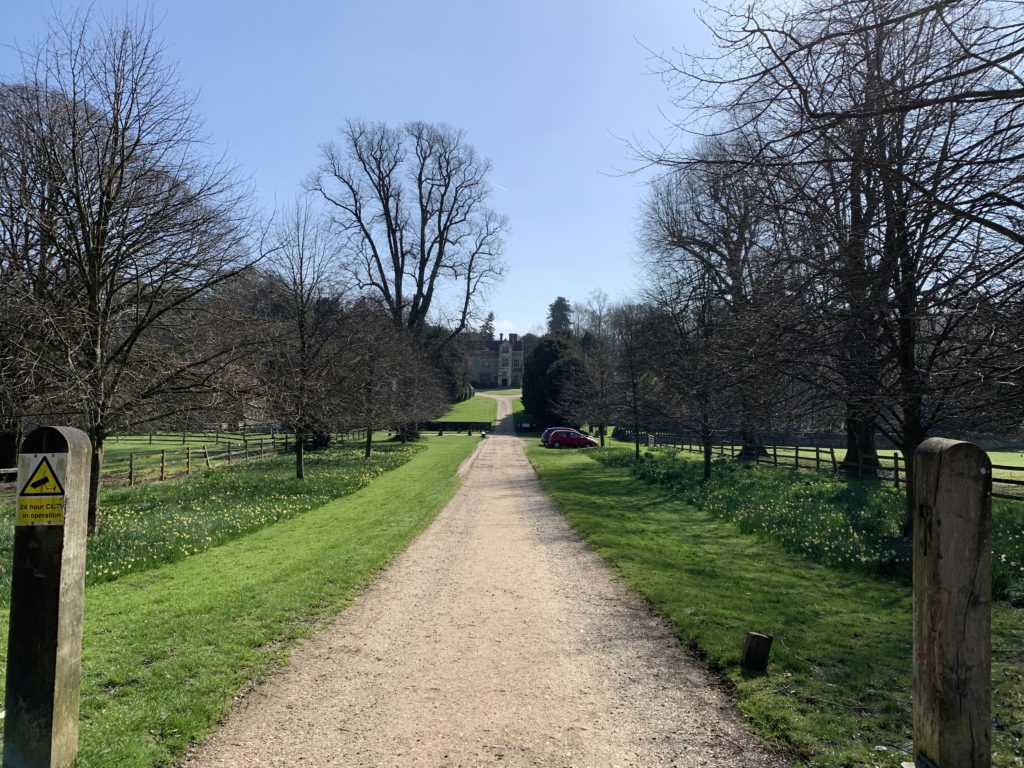
The Drive up to Chawton House 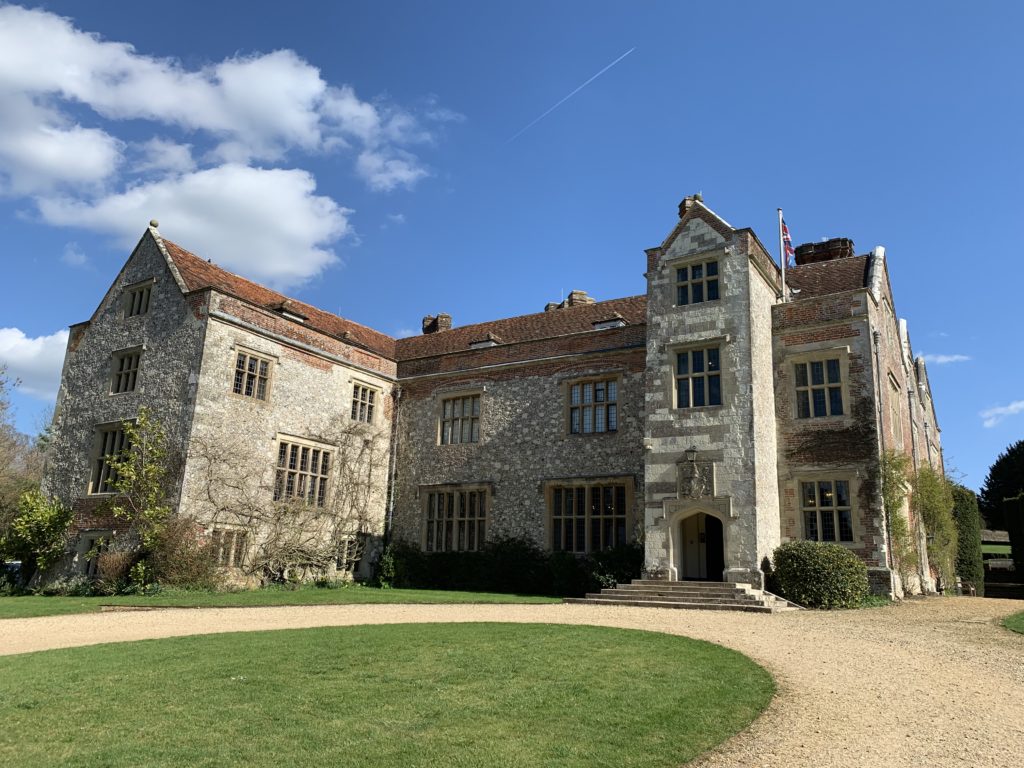
Chawton House 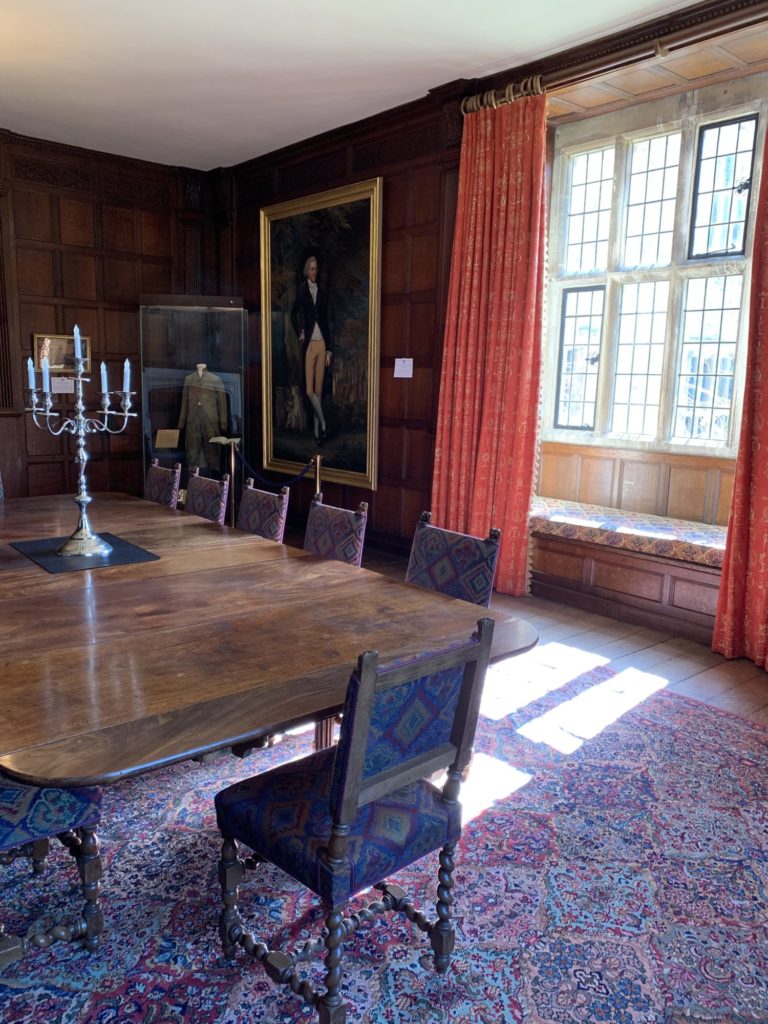
Chawton House Dining Room 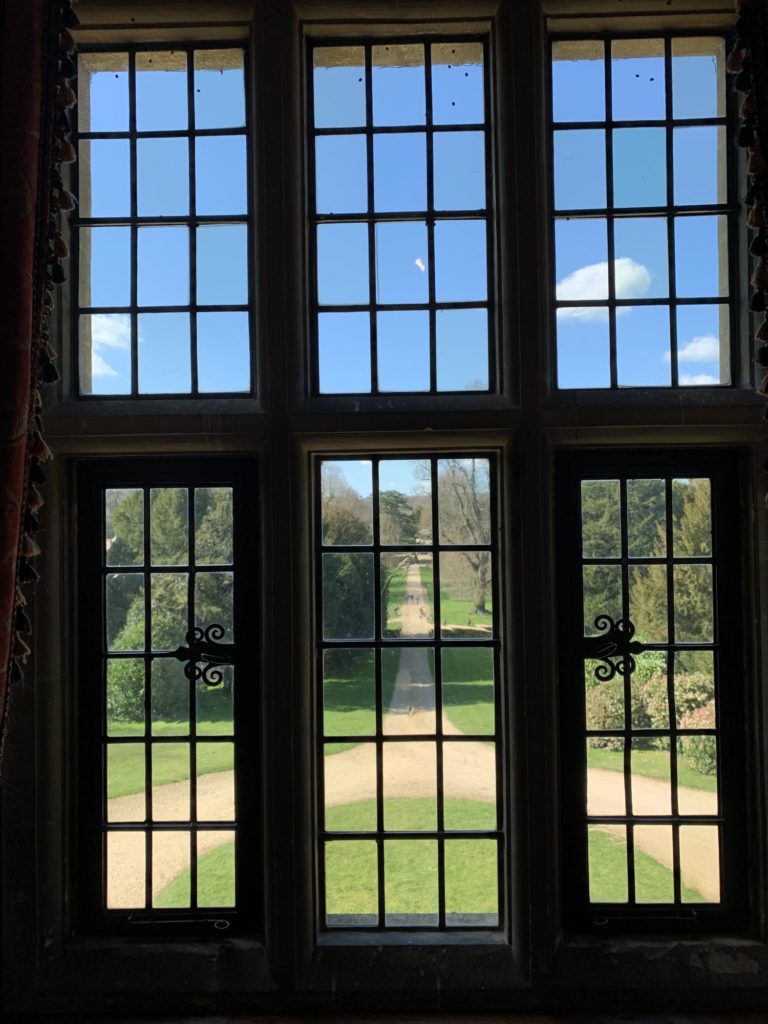
Looking out of Chawton House at the Drive
Little remains from the time that Edward Austen and his family lived here and maintenance of the house has been inconsistent in the years since. But, the house itself is worth seeing and it contains some interesting art and artifacts and its grounds feature pretty English gardens.
Jane, Cassandra and Mrs. Austen dined frequently with Edward and his family here. In the dining room, there’s a portrait of Edward and a child’s outfit thought to have been his.
St. Nicholas Church
Part of the estate and adjacent to the house is the church where Jane’s family attended Sunday services. It’s a beautiful little church with stained glass windows. A few Austen family members have served as its priest over the years. Its graveyard is the final resting place for Cassandra and Mrs. Austen.
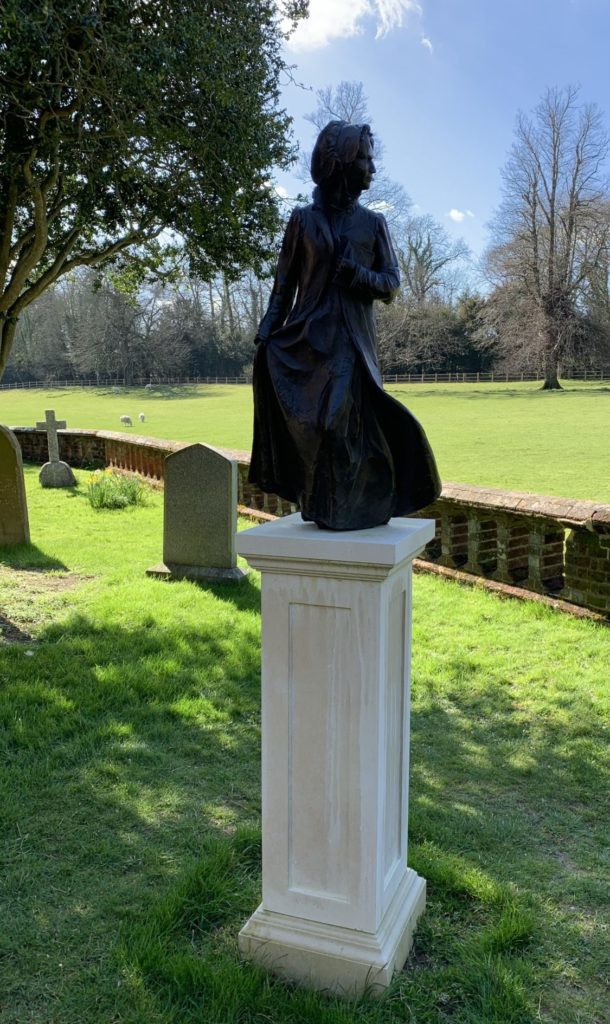
Jane Austen statue at St Nicholas Church 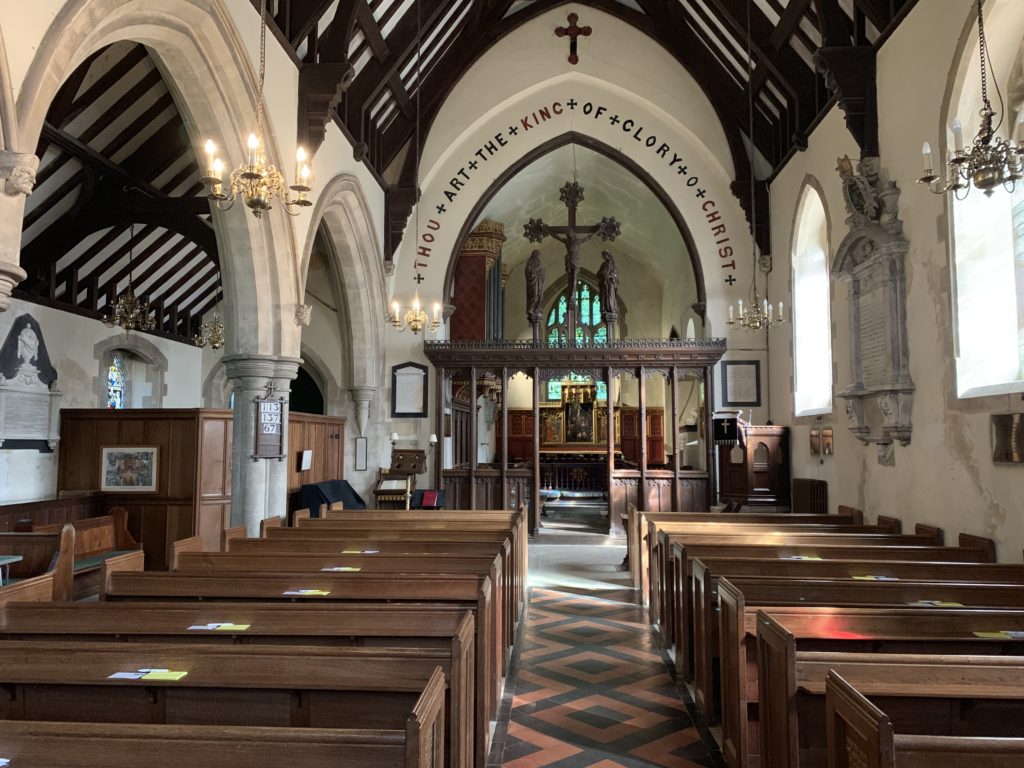
Inside St Nicholas Church 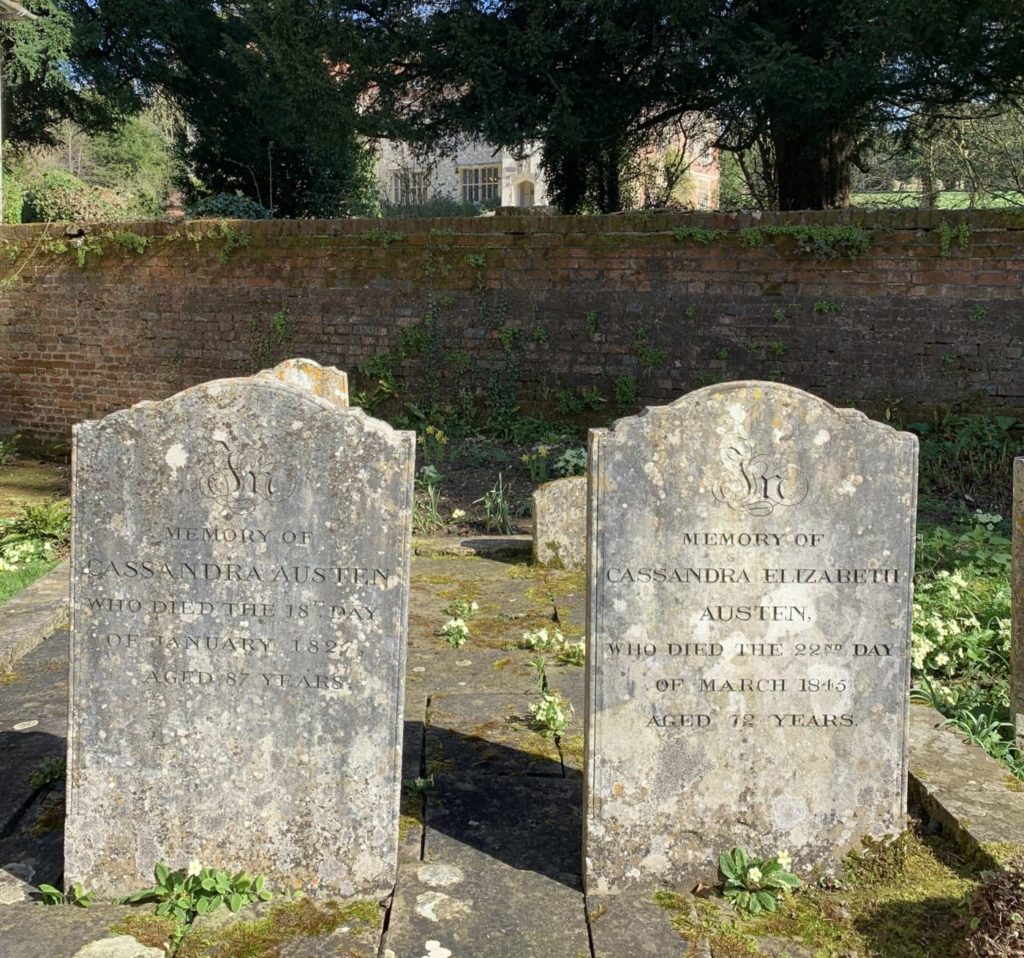
We both thoroughly enjoyed our day trip to visit a piece of Jane Austen’s life and walk where she walked. It’s a simple country house in a small village, but for a time, it was her world and I’m so glad that we were able to visit it.
That bookcase of classic books from my grandmother’s house was instrumental in launching my lifelong love of reading and literature. My mother inherited it from grandma when I was in high school, and six years ago, she gave it to me.
